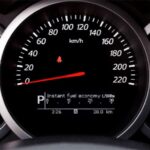For enthusiasts of the BMW E46, understanding the nuances between different production years can significantly impact ownership experience. Having spent time behind the wheel of both a 2000 323i and a 2005 330i ZHP, the evolution across the E46 Years is quite apparent. While my 2000 model was generally a solid car that I enjoyed, it presented a series of minor yet persistent issues, such as problems with the final stage resistor, window regulators, sunroof shade, and even interior rattles. Interestingly, these gremlins were far less prevalent in my 2005 model. This difference might be attributed to random manufacturing variations, but it strongly suggests that BMW refined the production process and addressed design flaws as the E46 model run progressed through its various e46 years. Indeed, BMW implemented subtle but impactful design alterations in later iterations, enhancing functionality and resolving recurring problems that emerged in earlier e46 years.
One notable example lies in the door handles. On later e46 years, the door handles feature a revised pull mechanism that angles outwards and upwards, effectively preventing the sticking issue common in earlier models with straight-pull handles. The HVAC controls also saw subtle improvements across the e46 years. Early models integrated fan speed and temperature adjustments into a single rocker switch, whereas later models adopted separate buttons for each function, offering improved usability. Anecdotally, the switchgear in the 2005 model feels noticeably more robust, suggesting enhanced material quality in later e46 years.
Alt text: Close-up of an E46 BMW door handle, highlighting the updated angled design in later e46 years to prevent sticking issues.
The sunroof shade is another area where later e46 years benefited from refinement. The newer car’s sunroof shade operates with a firmer feel and incorporates a soft-close feature, mitigating the risk of slamming it shut and potentially damaging the shade clips, a notorious weak point in earlier E46 models. Subframe mount failures, particularly in 1999-2000 coupes, were a concern in the initial e46 years. However, these issues became significantly less frequent in subsequent e46 years, indicating improvements in chassis reinforcement or manufacturing processes.
BMW also addressed control arm bushing wear during the e46 years. Later models received larger 66mm control arm bushings compared to the 60mm bushings in earlier cars. While most older E46s by now have likely been fitted with the upgraded 66mm bushings as replacements, the factory upgrade in later e46 years demonstrates BMW’s commitment to addressing wear-related issues. In terms of in-car entertainment, BMW progressively updated the CD player head units throughout the e46 years. Models from 2002 onwards gained Bluetooth and Sirius radio compatibility, while MP3 disc playback was introduced in 2005. Early head units were also known to occasionally struggle with disc ejection, a problem seemingly resolved in later e46 years.
Alt text: A comparison of E46 BMW interior HVAC controls, showcasing the evolution from single rocker switch in early e46 years to separate buttons in later models for fan speed and temperature.
Conversely, there were a couple of minor downgrades in later e46 years. Early models were supplied with a premium leather-bound zipper case for the owner’s manual and related documents, whereas later models received a less luxurious nylon covered button case. Similarly, early e46 years included an additional metal valet key alongside the two master keys and plastic wallet key, while later models only included the two master keys and the plastic key. The ZKW projector headlight bowl issue is another point of discussion among E46 enthusiasts. While my 2005 model headlights have performed well, it remains unclear if this problem was specific to certain e46 years or production batches.
Regarding aesthetics and performance packages across the e46 years, confusion often arises concerning the aerodynamic kits. In the US market, the M-Tech II body kit, most notably associated with the ZHP (Performance Package), remained exclusive to ZHP-equipped cars directly from the factory. While retrofitting the M-Tech II kit to any E46 is possible and a popular modification, it was never a standard feature on non-ZHP E46 models.
However, it’s crucial to note that 330i sedans equipped with the Sport Package (ZSP) across all e46 years (2001-2005) did feature an enhanced aerodynamics package known as the M-Tech I kit. This kit is distinguishable by a single large square opening in the front bumper and rounded fog lights that are flush with the bumper, contrasting with the three rounded openings of the M-Tech II/ZHP kit. The M-Tech I kit also includes a darkened square section on the rear bumper.
Alt text: Front view of an E46 BMW with the M-Tech I aerodynamic kit, highlighting the single large square opening and rounded fog lights characteristic of Sport Package equipped models across e46 years.
In summary, BMW offered different aerodynamic kits on the E46 sedan in the US market throughout its production run:
- Standard pre-facelift: 1999-2001 323, 325, 328 (all), 2001 330 (without sport package)
- Standard facelift: 2002-2005 325 (all), 2002-2005 330 (without sport package)
- M-Tech I: 2001-2005 330i with Sport Package
- M-Tech II: 2003-2005 330i with ZHP
Finally, it’s worth noting that the ZHP’s unique gearing does not negatively impact fuel economy. My experience shows a comfortable 23-24 mpg in typical suburban driving and around 30-31 mpg on highways (manual transmission), even with high-performance Z1 Star Spec tires. This reinforces that across the e46 years, BMW maintained a balance of performance and efficiency. Ultimately, understanding the subtle yet significant changes implemented across the e46 years can aid enthusiasts in making informed decisions when choosing their ideal E46 BMW.
